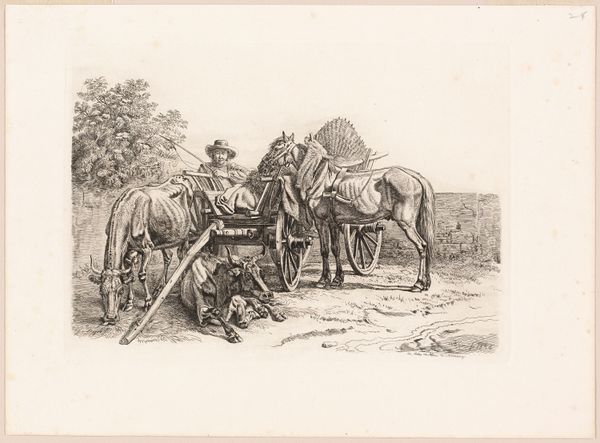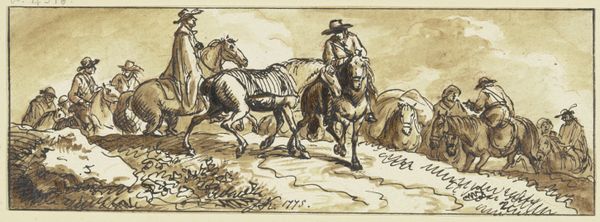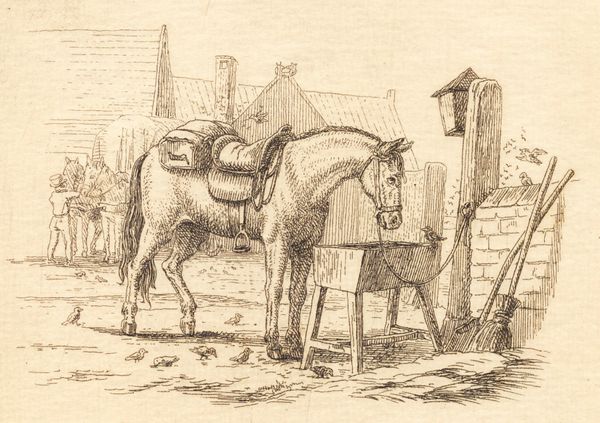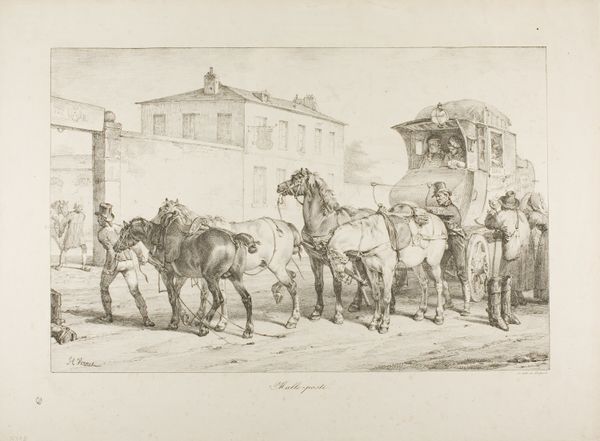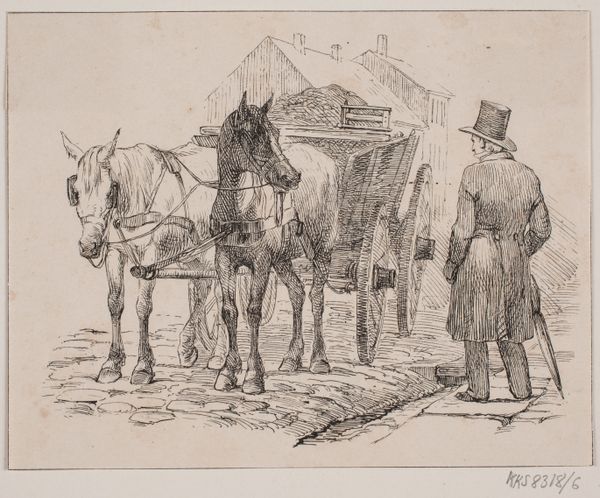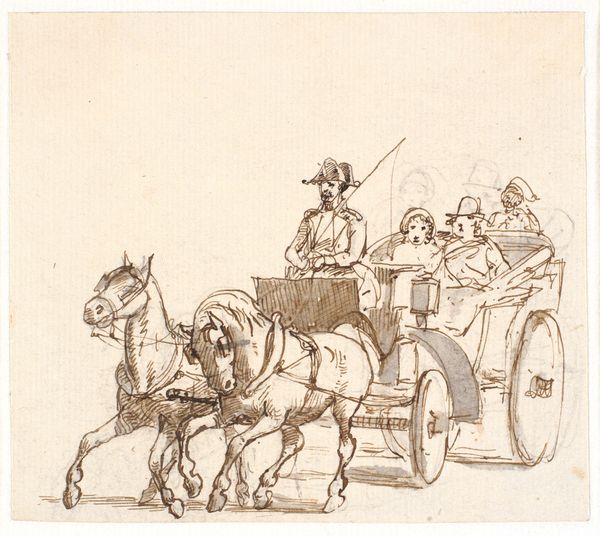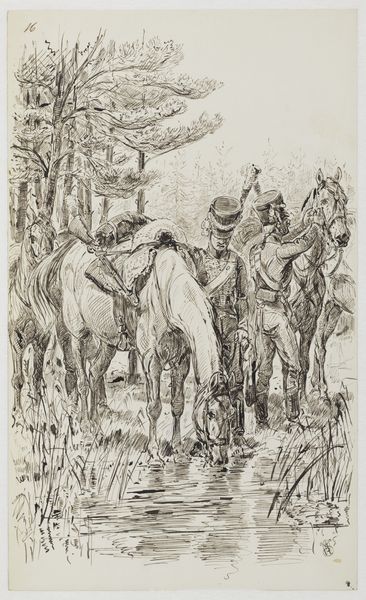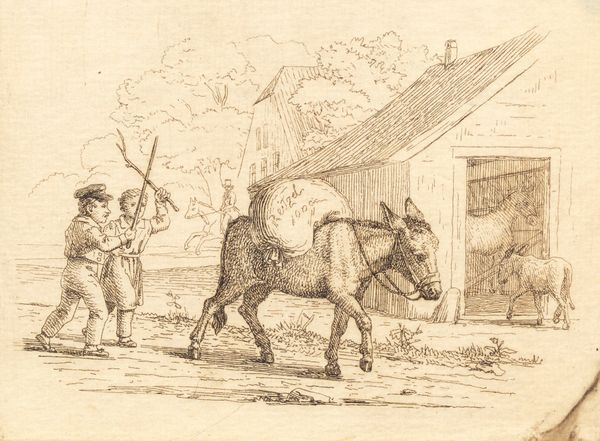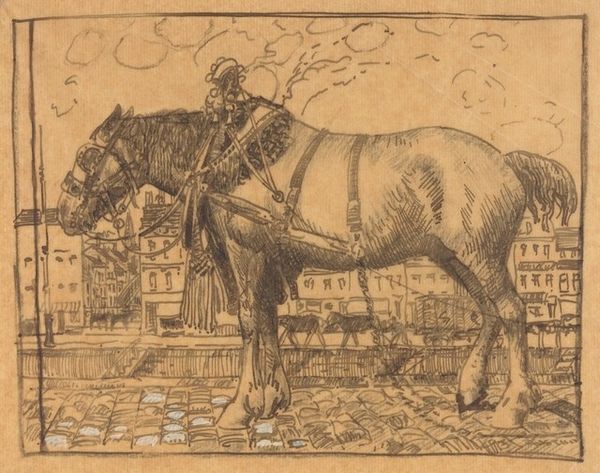
drawing
#
drawing
#
figuration
#
genre-painting
Dimensions: 163 mm (height) x 201 mm (width) (bladmaal)
Editor: So this is Wilhelm Marstrand's "Don Quixote stiger til hest," made sometime between 1810 and 1873. It's a drawing, and it feels almost like a quick sketch. There’s a lot of emphasis on line work and detail, especially in the figures. What catches your eye when you look at this piece? Curator: What intrigues me is how Marstrand, through the simple act of drawing, brings to the fore the social dynamic embedded in Cervantes' narrative. Look at the stark contrast in the portrayal of labor. The horse, undoubtedly a significant investment, contrasts sharply with the humble donkey. Who owns these animals? Editor: Right! It emphasizes their class difference. Don Quixote in his gleaming, if somewhat ridiculous, armor versus Sancho Panza and his donkey. It’s kind of humorous, actually. Curator: Indeed, and the humor isn't just in their appearance. Consider the artist’s labor. Drawing was a means of reproduction and dissemination of stories, reliant on paper, ink, and skill. But the drawing's purpose then isn't the same now; is it purely artistic expression, or advertisement for larger paintings, engravings or plays, perhaps? Who was intended to view it? What kind of making-of access does it offer, almost like unreleased film footage of a blockbuster? Editor: That makes me see the sketchiness in a different way. The drawing material itself emphasizes accessibility, doesn’t it? As opposed to, say, oil paint. Curator: Precisely. It democratizes the epic, highlighting not just the grand adventure but also the economic and social realities underpinning the very act of storytelling and the lives within the story. The drawing, in its very being, speaks to these material conditions. Editor: I’d never really considered that aspect of the image. Thanks. Curator: Likewise, thinking about its materiality offers new layers to familiar works.
Comments
No comments
Be the first to comment and join the conversation on the ultimate creative platform.


